INTRODUCTION
- Books Name
- Science Made Easy Science Book
- Publication
- Science Made Easy
- Course
- CBSE Class 9
- Subject
- Science
Introduction
→ John Dalton considered atom to be an indivisible entity, but his concept had to be discarded the end of nineteenth century,through experiments were able to find existence of charged (electrons and protons) and neutral particles (neutrons) in the atom. These particles are called the ‘Sub-atomic Particles’.
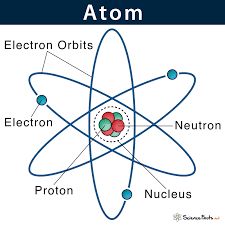
1. Introduction
- Books Name
- Science Made Easy Science Book
- Publication
- Science Made Easy
- Course
- CBSE Class 9
- Subject
- Science
Discovery of Electrons – Cathode Rays (By J. J. Thomson)
→ Thomson explained presence of electrons by cathode rays experiment.
Facts about Electrons
→ Charge on electron = −1.6 × 10-19 C (C = Coloumb)
(As calculated by Robert E. Millikan)
→ Mass of electron = 9.1 × 10-31 kg
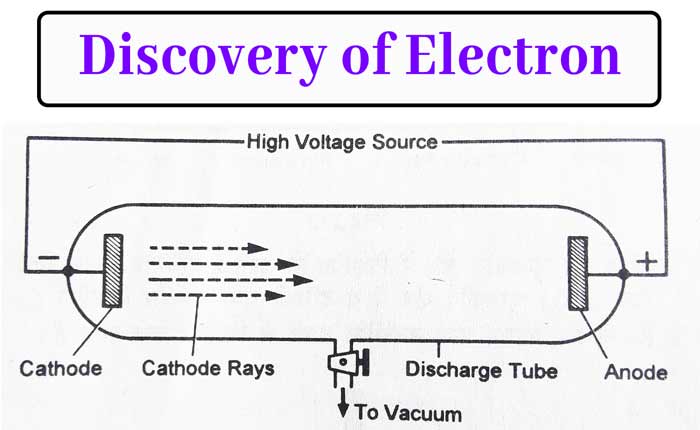
1. Introduction
Chapter 4
Structure of an Atom
Charged particles in Matter
• Atoms are the basic building blocks of matter.
• Different kinds of matter exist because there are different kinds of atom
present in them.
Postulates of Dalton’s Atomic Theory
• All matter is made up of tiny, indivisible particles called atoms.
• All atoms of a specific element are identical in mass, size, and other properties. However, atoms of different element exhibit different properties and vary in mass and size.
• Atoms can neither be created nor destroyed. Furthermore, atoms cannot be divided into smaller particles.
• Atoms of different elements can combine with each other in fixed whole-number ratios in order to form compounds.
• Atoms can be rearranged, combined, or separated in chemical reactions.
• John Dalton considered atom to be an individual entity, but his concept had to be discarded at the end of 19th century, when scientist through experiments able to find existence of charge (electrons & protons) and neutral particles (neutrons) in the atom. These particles were called sub atomic particles.
• The discovery of electron and proton is credited to J.J. Thomson and E. Goldstein, respectively.
• J.J. Thomson proposed that electrons are embedded in a positive sphere
• Electron was represented as 'e-' and proton as 'p+'. The mass of a proton is taken as one unit and its charge as plus one where the mass of an electron was considered to be negligible and its charge minus one
• It seemed that atom consisted of electrons and protons which balanced their charges mutually.
1. Introduction
- Books Name
- Yash Tyagi Coaching Science Book
- Publication
- ACERISE INDIA
- Course
- CBSE Class 9
- Subject
- Science
Chapter-4
Structure of the Atom
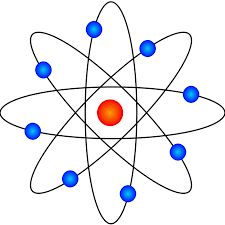
Structure of the Atom Introduction
As you all know, we come across different substances around us that constitute matter. This matter is made up of small particles called atoms. Let us know more about atom, its structure and its constituents. Matter: is anything that occupies space and has mass. It consists of tiny particles which were called ‘parmanu’ but later on this name was replaced by ‘atom’.
Dalton’s Atomic Theory
The scientist, Dalton was the first one to actually formulate all information of an atom in a theoretical form as Dalton’s Atomic Theory. He was born in 1766 and died in 1844. His theory was published in 1808. His full name was John Dalton
According to this theory, the following observations were made
1. All matter is made up of small particles called atoms.
2. Atom is invisible.
3. Atom is indivisible.
4. Atoms of an element are alike in all aspects, that is, if we talk about sodium then all the atoms of sodium will be the same in all aspects.
5. Atoms of different elements are different, that is, if we talk about sodium and potassium, then, the atoms of both are going to be different but same among themselves.
6. Atoms of different elements combine in a fixed simple whole number ratio to form compounds.
7. Atoms can neither be created nor destroyed, that is, the origin of atoms is not known.
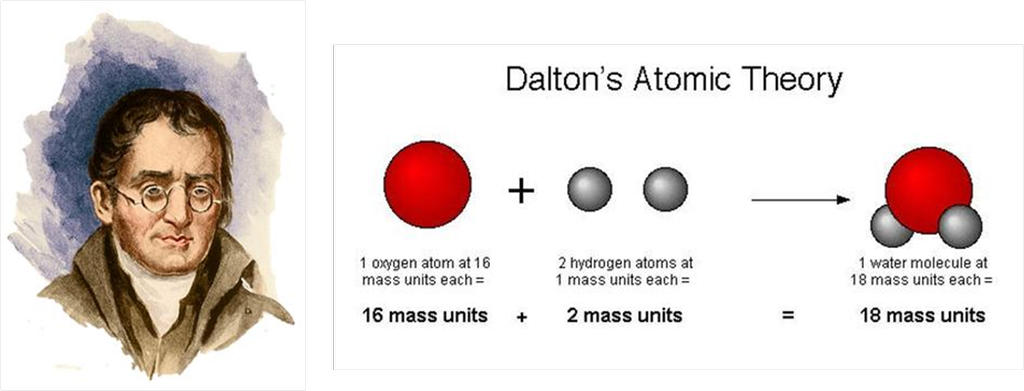
Drawbacks of Dalton’s Atomic Theory
There were certain limitations as observed by other scientists. They observed the following
1. According to Dalton, an atom was indivisible but later on, it was proved that atom can be subdivided into sub atomic particles called electrons, protons & neutrons.
2. Atoms of the same element can somehow differ from each other. This was proved due to the existence of isotopes in nature.
3. Similarly, atoms of different elements can be the same. This came into notice due to the existence of isobars in nature.
4. According to it, whenever the compound is formed, it is formed as a result of the combination of atoms in a fixed simple ratio. But it has been seen that the ratio might not always be simple. For example, in sucrose that is C12H22O11, the ratio is not a simple ratio.
So, these drawbacks led to failure of Dalton’s theory of an atom.
2. Discovery of Electrons and Protons
- Books Name
- Science Made Easy Science Book
- Publication
- Science Made Easy
- Course
- CBSE Class 9
- Subject
- Science
Discovery of Protons – Anode Rays/Canal Rays (By E. Goldstein)
→ E. Goldstein by his famous anode rays/canal rays experiment was able to detect presence of positively charged particles called protons in the atom.
Facts about Protons
→ Charge on proton = + 1.6 × 10-19 C
→ Mass of proton = 1.673 × 10 -24 gm
i.e., Mass of proton ≅ 1840 × Mass of electron
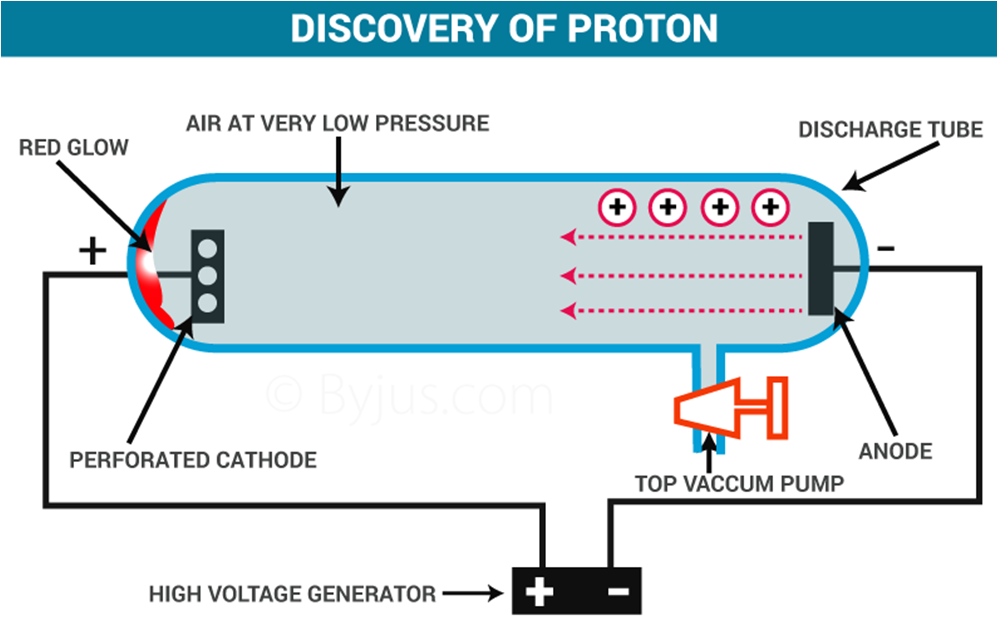
2. Discovery of Electrons and Protons
The Structure of an atom
• Dalton's atomic theory suggested that the atom was indivisible and indestructible. However, the discovery of two fundamental particles in the atom the electrons and protons led to the failure of this aspect of the theory.
• Hence, J.J. Thomson was the first to propose a model for the structure of an atom.
Thomson’s Model of an Atom
According to J.J. Thomson, the structure of an atom can be compared to Christmas pudding where electrons are present inside a positive sphere.
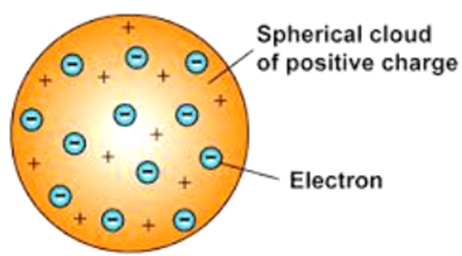
• An atom is composed of a positively charged sphere in which electrons are embedded.
• Atom is neutral as the positive and negative charged are equal in proportion.
Rutherford’s Model of an Atom
Rutherford’s Experiment
• He experimented with thin gold foil by passing alpha rays through it.
• He expected that the gold atoms will deflect the Alpha particles.
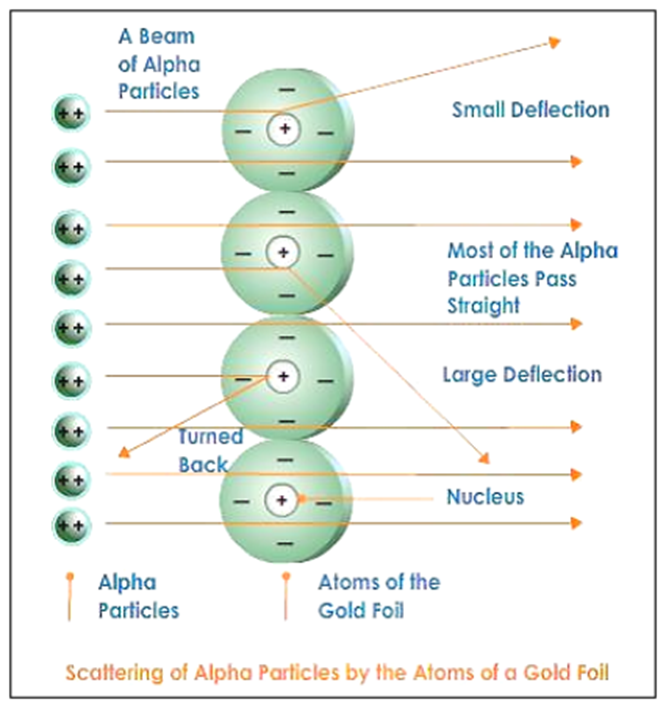
|
Observations |
Inferences |
|
Alpha particles which had high speed moved straight through the gold foil |
Atom contains a lot of empty space |
|
Some particles got diverted a by slide angles |
Positive charges in the atom are not occupying much of its space |
|
Only one out of 12000 particles bounced back |
The positive charges are concentrated over a particular area of the atom. |
Thus, Rutherford gave the nuclear model of an atom based on his experiment which suggests that -
• Atoms contain a lot of unoccupied space
• There is a heavily positively charged substance present in the center of the atom which is called the nucleus
• The nucleus contains an equal amount of positive and negative charge.
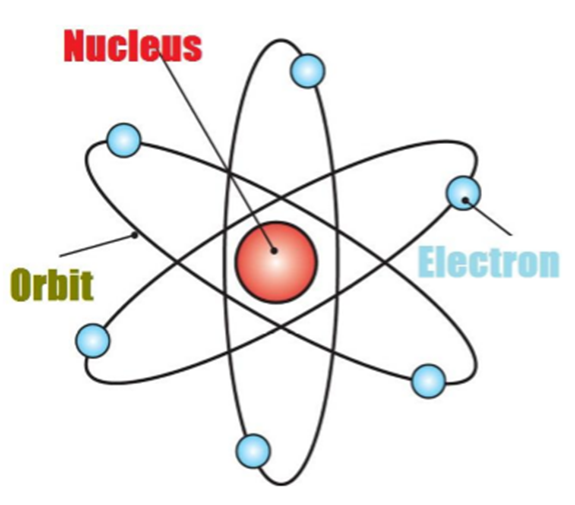
Drawbacks of the Nuclear Model of an Atom
• The Nuclear Model of the Atom failed to explain how an atom remains stable despite having positive and negative charges present in it.
• Maxwell has suggested a theory according to which if any charged particle moves in a circular motion, it radiates energy.
• So, if electrons start moving in a circular motion around the nucleus, they would also radiate some energy which would decrease at the speed of the electrons.
• As a result, they would fall into the nucleus because of its high positive charge.
What are nucleons? – Protons and Neutrons are collectively called as Nucleons.
2. Discovery of Electrons and Protons
- Books Name
- Yash Tyagi Coaching Science Book
- Publication
- ACERISE INDIA
- Course
- CBSE Class 9
- Subject
- Science
Discovery of Electrons and Protons
Discovery of electrons
It was discovered by J.J. Thomson in the year 1897. He took Crooke’s tube and arranged the apparatus as shown in figure:
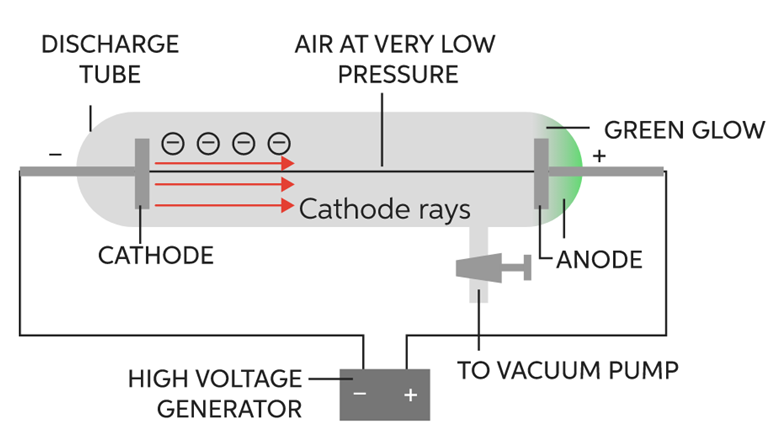
The following observations were made
1. When he passed electric current (at high voltage approximately at 10,000volts) through a gas at a pressure of 1 atm, then nothing happened as no changes were seen.
2. When he reduced the pressure to 10-2 atm, the whole tube started glowing with green colour.
3. He further reduced the pressure to 10-4 atm, the whole tube stopped glowing, but a faint green colour was still seen at the anode end.
4. To confirm, a fluorescent screen was placed at the back of the anode and anode was made perforated. When current was passed through it (in the same physical conditions), the Zinc Sulphide screen started glowing which confirmed the following fact.
The following was concluded
It proved that at these conditions, some rays were emitted through cathode and were travelling towards anode called cathode rays consisting of negatively charged particles. These particles were later called electrons. This is how the electron was discovered.
Discovery of Protons
It was discovered by E.Goldstein in the year 1920. It was actually discovered while carrying out an experiment to produce cathode rays. The apparatus used was the same:
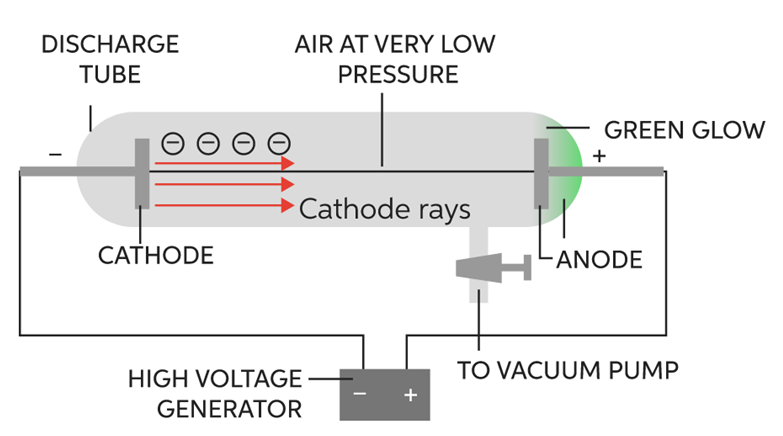
The following observations were made
It was seen that when cathode rays were produced (at high voltage and low pressure), they travelled through the gas in the discharge tube. While doing so, they ionized the gas. That is, they took electrons of gas along, leaving behind positively charged particles of the gas. These particles formed canal rays and started moving towards the cathode. These particles are called canal rays as they are not produced by anode. As these particles possess positive charge so they were named as protons.
Now after knowing about the atom, different attempts were made to know about its structure.
Thomson’s model of an atom (plum pudding model)
His full name was J.J. Thomson and he was the one who made the first attempt to explain the structure of atoms.

According to him, an atom is a positively charged sphere in which negative charges are present at certain places like plums in a pudding or cherries in an ice-cream. But this model was rejected as he could not explain the major point seen in his model.
Drawback of Thomson’s atomic model were as follows
He could not explain the distribution of charges and stability of an atom. As we all know that opposite charges attract each other, so, how come it is possible that few negative charges remain scattered in this big positive space. They would have been neutralized. This could not be explained by J.J. Thomson that lead to failure of his attempt.
Rutherford’s scattering experiment
In order to understand the structure of an atom, Rutherford performed the scattering experiment. For this, he took a gold foil and passed alpha rays through it. Gold foil actually consists of many gold atoms. So, at an individual level, we are considering the observations through an atom. Alpha rays are actually positively charged rays consisting of Helium nucleus (He).
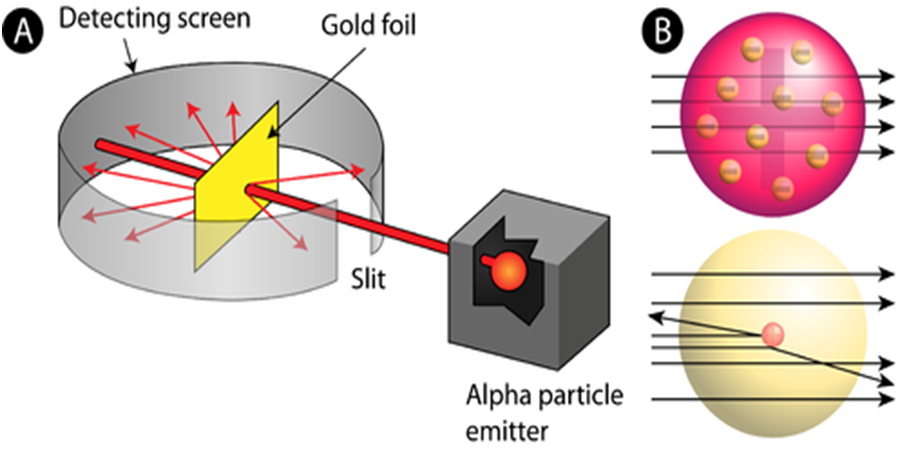
These rays, when passed through it suffered reflections at different angles and to note that a movable screen made of fluorescent material was placed around it. When the reflected rays strike that screen it causes scintillation. When he passed these rays through gold foil various observations were seen.
Observations were as follows
- Most of the rays passed straight.
- Some rays were deflected through small & large angles.
- Some rays rebound back.
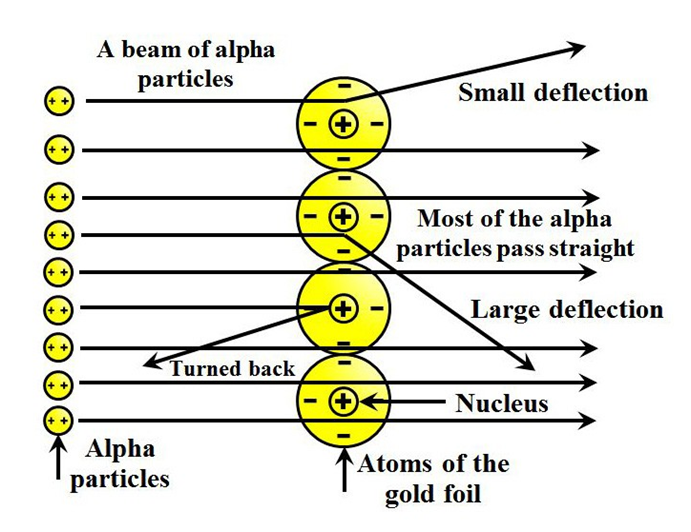
The following conclusions were made
- Most of the space in an atom is empty.
- There is something in the centre of an atom called nucleus.
- Nucleus is positively charged.
So, According To Rutherford, the structure of an atom is similar to that of the solar system.
He said:
- Atom is electrically neutral
- Nucleus is in centre in which protons are present.
- Outside nucleus electrons revolve like planets revolve around the Sun.
In this model also few limitations were seen and some questions were left unanswered, which led to its failure.
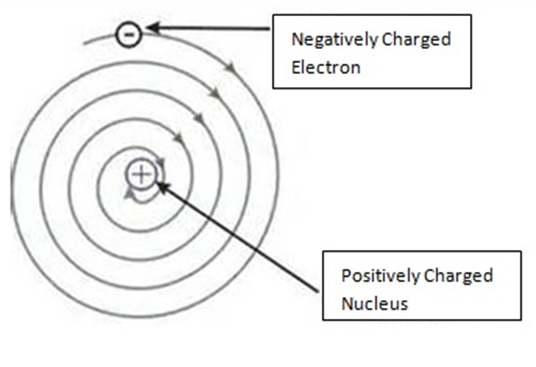
The drawback of Rutherford’s experiment were as follows –
He failed to explain the stability of an atom”.
According To electromagnetic theory: Any charged particle, when revolves in a circular path, continuously emits energy and shortens its path. As we know, an electron is also a charged particle revolving in a circular path so it should also emit energy, shorten its path and should finally falls into the nucleus and for doing so, it needs time lesser than a fraction of a second. But this doesn’t happen.
3. Discovery of Neutrons
- Books Name
- Science Made Easy Science Book
- Publication
- Science Made Easy
- Course
- CBSE Class 9
- Subject
- Science
Discovery of Neutrons (By J. Chadwick)
→ J. Chadwick bombarded lighter elements (like lithium, boron etc.) with α-particles and observes
emission of new particles having zero charge but having mass equal to that of proton.
→ These particles were called ‘Neutron’ i.e., neutral particle of the atom.
→ Neutron are absent in Protium isotope of hydrogen atom.(1H1)
→ Since, mass of electrons are negligible as compared to that of proton and neutrons hence, sum
of masses of protons and neutrons in an atom will compose its atomic mass.
3. Discovery of Neutrons
Bohr Model of an atom
Bohr suggested that –
• Electrons spin around the nucleus in an individualized separate path or unattached orbit.
• The electrons do not emit any energy while moving Indies special orbits.
• These orbits are also called as Energy Levels.
• They are represented using letters or numbers as shown in the figure below –
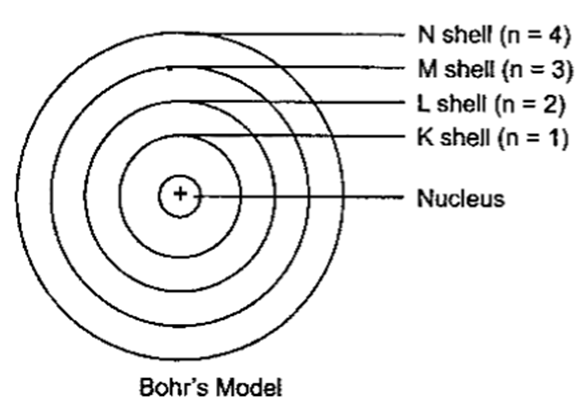
The Neutrons
J. Chadwick discovered that there is another sub-atomic particle present in the atom. This particle carries no charge and is known as a Neutron. Therefore, we can conclude that atom consists of three types of particles –
|
Electrons |
which carry a negative charge |
|
Protons |
which carry a positive charge |
|
Neutrons |
they are neutral |
The distribution of electrons in different shells or orbits
• If Orbit number = n
• Then number of electrons present in an Orbit = 2n2
• So, for n =1
• Maximum electrons present in shell – K = 2 * (1)2 = 2
• The outermost shell can contain at most 8 electrons.
• The shells in an atom are filled in sequence.
• Thus, until the inner shells of an atom are filled completely the outer shells cannot contain any electrons.
3. Discovery of Neutrons
- Books Name
- Yash Tyagi Coaching Science Book
- Publication
- ACERISE INDIA
- Course
- CBSE Class 9
- Subject
- Science
Discovery of Neutrons
Discovery of neutron
It was discovered by Chadwick in the year 1932. It was actually discovered while considering the mass of atomic particles. It was seen that the whole mass of an atom is due to the nucleus and as far we know, the nucleus is positively charged. That means it has only protons in it. But we also know that the mass of an atom is never equal to the number of protons. This shows that the nucleus contains some other particles also that contribute towards mass only and not towards charge. Therefore, the particles were called neutrons (as they possess no charge).
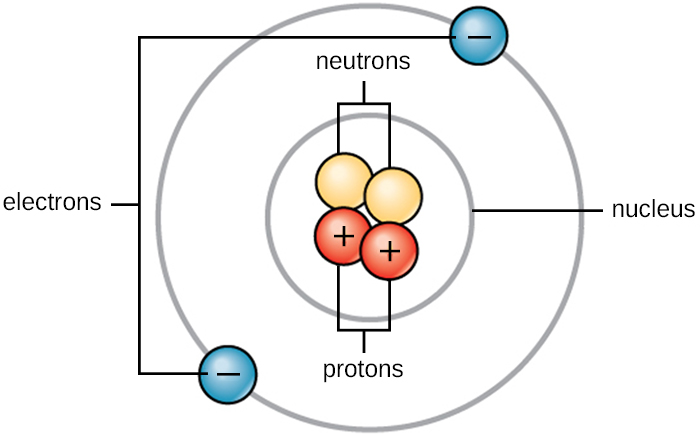
Bohr’s theory
To overcome the limitations of Rutherford model, the new concept and picture of atom was given by Neil Bohr which made a great contribution in knowing the structure of an atom. According to it:
- Atom is electrically neutral i.e. number of Protons = number of Electrons.
- In the centre of an atom, nucleus is present which is positively charged.
- In the nucleus, protons and neutrons are present.
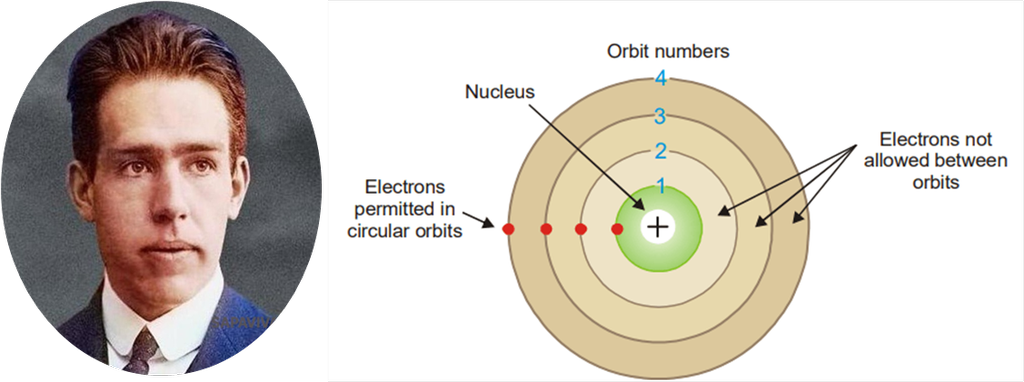
Protons possess = positive
Neutron possess = no charge
- Outside the nucleus, shells or energy levels designated as K,L,M,N and so on are present.
- In shells, electrons revolve.
- Electrons are negatively charged.
- Each shell has a fixed amount of energy. So, as long as an electron remains in the same shell, it never loses or gains energy.
- Number of electrons in each shell is determined by Bohr Bury rule i.e. 2n2.
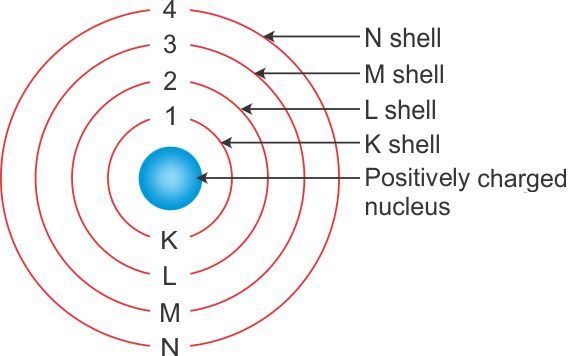
4. Some Important Defintion
- Books Name
- Science Made Easy Science Book
- Publication
- Science Made Easy
- Course
- CBSE Class 9
- Subject
- Science
Atomic Models
→ From the knowledge of existence of subatomic particles like electron, proton and neutron in
atom, various atomic models were proposed by different scientists.
• Some of the atomic models:
(i) Thomson’s Model of Atom
(ii) Rutherford’s Model of Atom
(iii) Bohr’s Model of Atom
→ The most trusted and scientifically established model of atom which is adopted these days
‘Quantum Mechanical Model of Atom’. It will be dealt in higher classes.
Thomson’s Atomic Model
→ This model is often called the ‘Water Melon Model’.
→ In this model, Thomson predicted the presence of electrons inside positive sphere (made up
protons), just same as seeds of watermelon are embedded in red edible part of watermelon.
→ Although this model explained neutrality of atom but couldn’t able to explain other scientific
experiments conducted on atom. Hence it was discarded.
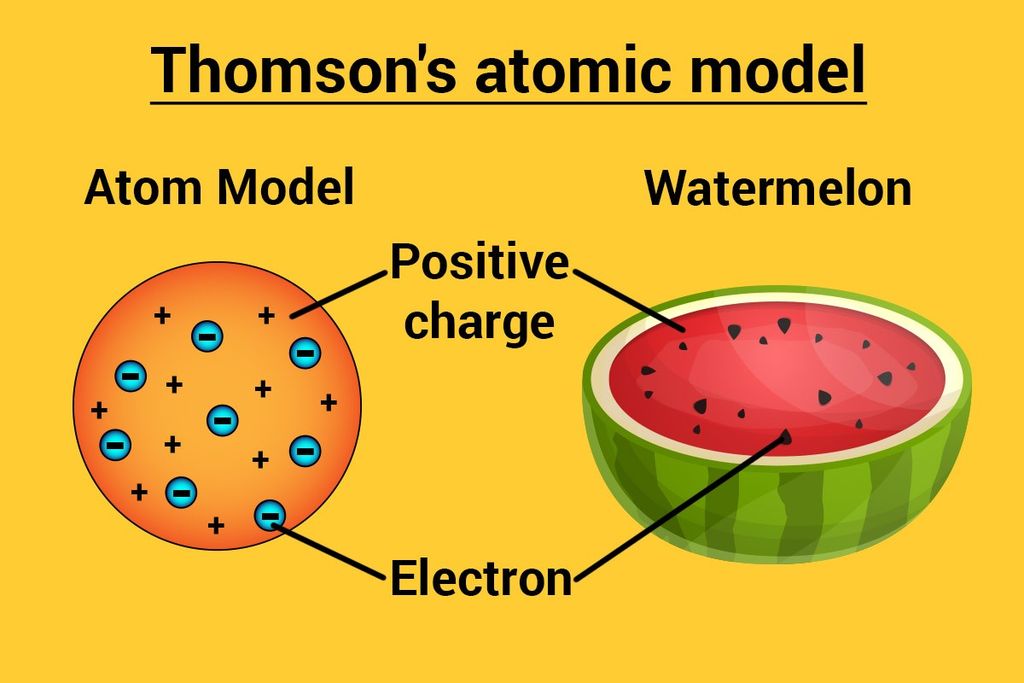
4. Some Important Defintion
Valency
• Valence Electrons – Electrons existing in the outermost orbit of an atom are called Valence Electrons.
• The atoms which have completely filled the outermost shell are not very active chemically.
• The valency of an atom or the combining capacity of an atom is given by the number of elements present in the outermost shell.
• For Example, Helium contains two electrons in its outermost shell which means its valency is two. In other words, it can share two electrons to form a chemical bond with another element.
• What happens when the outermost shell contains a number of electrons that are close to its maximum capacity?
Valency in such cases is generated by subtracting the number of electrons present in the outermost orbit from octet (8). For example, oxygen contains 6 electrons in its outermost shell. Its valency is calculated as: 8 – 6 = 2. This means oxygen needs two electrons to form a bond with another element.
Atomic Number of an Element
Atomic Number (Z) = Number of protons in an atom
Mass Number of an Element
Mass Number = Number of protons + Number of neutrons
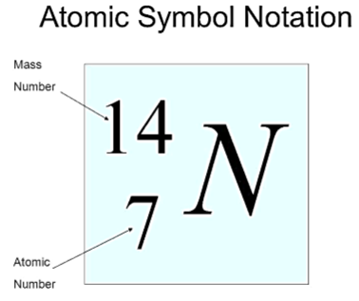
Isotopes
• The atoms of an element can exist in several forms having similar atomic numbers but varying mass numbers.
• Isotopes are pure substances.
• Isotopes have a similar chemical nature.
• Isotopes have distinct physical characteristics.
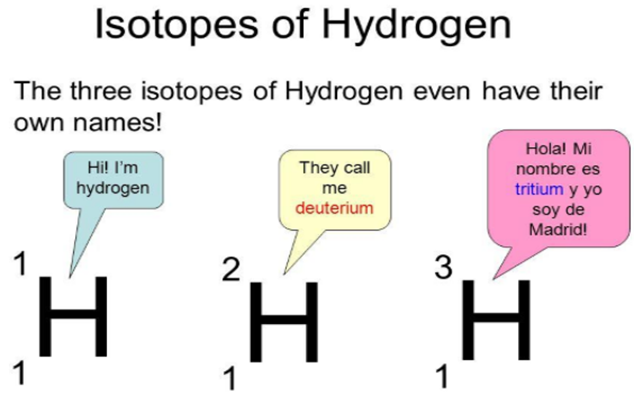
Where can we use Isotopes?
1. The fuel of Nuclear Reactor – Isotope of Uranium
2. Treatment of Cancer – Isotope of Cobalt
3. Treatment of Goitre – Isotope of Iodine
Isobars
The atoms of several elements can have a similar mass number but distinct atomic masses. Such elements are called Isobars.
Isotones
• Species having same number of neutrons but different number of protons are called Isotones.

• Examples include boron-12 and carbon-13 nuclei both contain 7 neutrons, and so are isotones.
Difference Between Isotopes, Isobars & Isotones

4. Some Important Defintion
- Books Name
- Yash Tyagi Coaching Science Book
- Publication
- ACERISE INDIA
- Course
- CBSE Class 9
- Subject
- Science
Some Important Defintion
Atomic number (z): Is defined as “Number of protons in atom”.
Mass number (A): Is defined as “sum of protons and neutrons present in the nucleus of an atom.”
Representation of an element
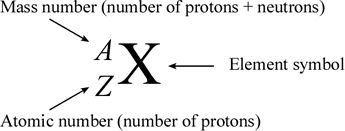
Where Z = atomic number (Sub script)
Where A= mass number (Superscript)
Electronic configuration It is defined as “Arrangement of electrons in different shells.” The arrangement is according to Bohr bury rule that is 2n².
Valence shell It is the last shell of an atom. For example, in the case of Sodium, the electronic configuration is 2,8, 1. In this, the shells involved are K,L,M. Therefore, the last shell is M (valence shell).
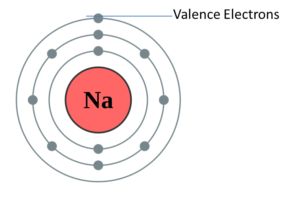
Valence electrons The electrons present in the valence shell of an atom, for example, in the case of Sodium, the electronic configuration is 2,8, 1. In this, the shells involved are K,L,M. The electrons present in valence shell are valence electrons that are 1.
Valency It is the combining capacity of an atom. It depends upon the number of valence shell electrons that is electrons in the last shell of an atom (that can be seen while writing electronic configuration). We have two types of valency that is:
- Electro-valency
- Covalence
- Electro-valency: It is the valency that is attained by losing and gaining of electrons. For example, in the case of Sodium, the atomic number is 11 and electron distribution is 2,8,1. So, in order to attain stability, it can either lose one electron or gain 7 electrons. Out of the two oprions, losing 1 electron is easier, therefore, it loses one electron and therefore, its valency is +1.
- Covalence: It is the valency that is attained by sharing of electrons. For example, in the case of carbon, it can attain stability by sharing 4 electrons. If we look at its distribution, it needs four more electrons, so it completes its octet by sharing four electrons. Therefore, its valency is -4.
Isotopes
They are those elements which have the same atomic number but different mass numbers.
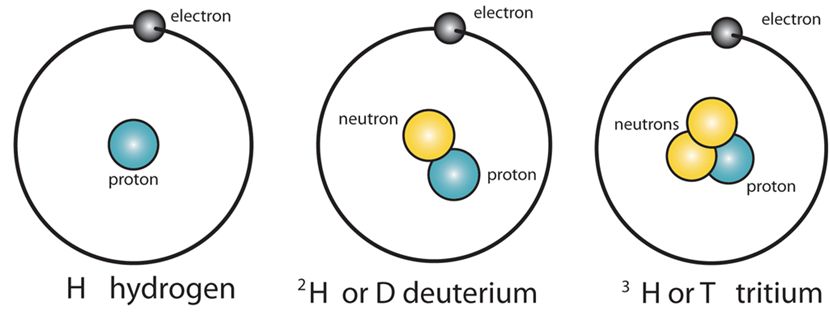
Properties of isotopes are as follows
- The number of protons is the same.
- The symbol is the same.
- Number of valence electrons and valency is same.
- They differ only in number of neutrons.
Applications of isotopes
- U-235 is used as a nuclear fuel.
- Co-60 used in the treatment of cancer.
- I-128 used in the treatment of goitre.
- C-14 is used in carbon dating.
For example:
- In the case of Hydrogen, the isotopes are – H1 H2 H3 . (But atomic number for all is 1).
- In case of oxygen, the isotopes are – O16 O17 O18 . (But atomic number for all oxygen is 8).
Isobars
They are those elements which have the same mass number but different atomic number. For example: sodium and magnesium are isobars as they have different atomic numbers but same mass number that is 24.
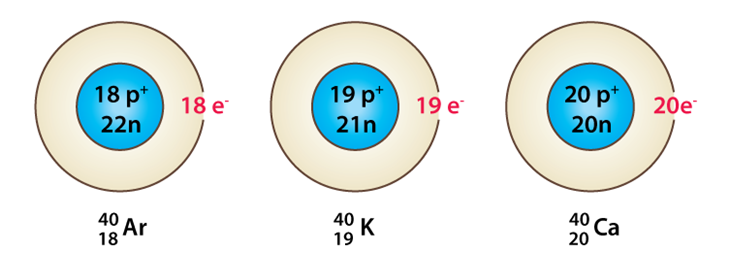
Isotones
They are those elements which have the same number of neutrons. For example: carbon, nitrogen and oxygen all have 8 neutrons.
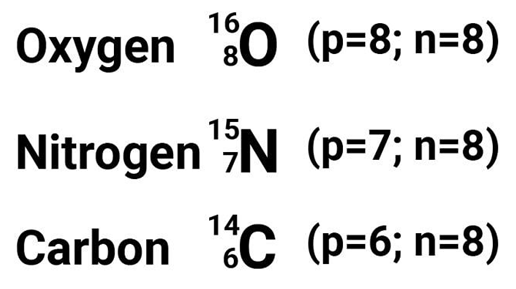
The atomic numbers of various elements along with electronic configuration and valency is given below
Atomic numbers from 1 to 20 are as follows
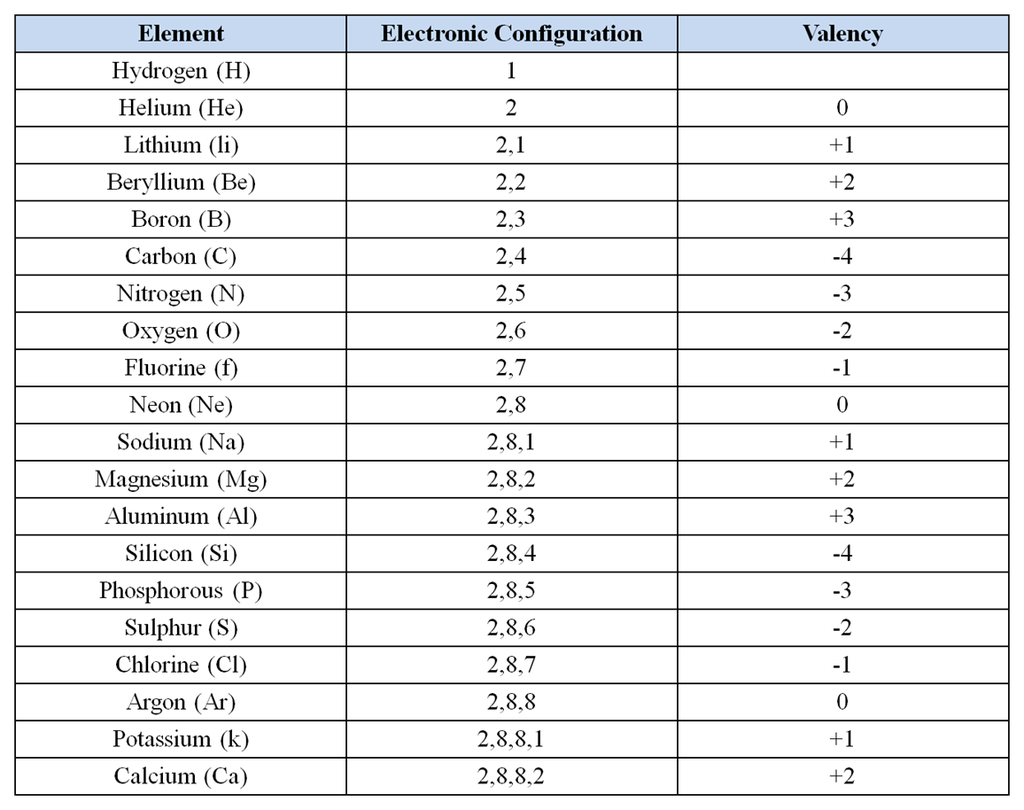
5. Atomic Number And Mass Number
- Books Name
- Science Made Easy Science Book
- Publication
- Science Made Easy
- Course
- CBSE Class 9
- Subject
- Science
Rutherford’s Atomic Model
→ In his famous ‘α-ray Scattering Experiment’, Rutherford bombarded α-ray (Helium nucleus 2 H
upon thin gold foil.
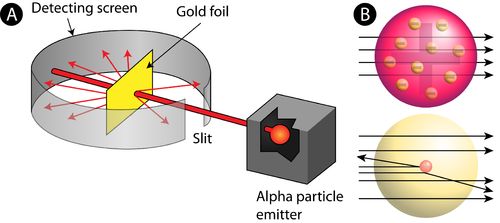
• Observations made by Rutherford in his experiment:
(i) Most of α-particles passed through gold foil undeflected.
(ii) Some of the α-particles deflected by foil by small angles.
(iii) One out of every 12000 particles appeared to rebound.
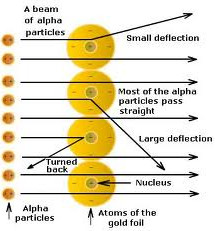
• Conclusions made by Rutherford:
(i) Atom consists of predominantly empty space as most of α-particles passed through gold foil undeflected.
(ii) Atom contains centrally placed positively charged nucleus (carrying positively charged particles), because few α-particles suffered deflected and very few i.e., one in 12000 bounced back.
(iii) Since a minute fraction of α-particles suffered deflections and very few bounced back, this
to conclusion that most of the space an atom is empty and the space occupied by nucleus is negligible compared to this empty space.
→ Size of nucleus was about 10-5 times that of size of atom.
(iv) Whole of the atomic mass concentrated in the nucleus.
• Features of Rutherford proposed model of atom:
(i) There is positively placed nucleus in an atom. Nearly all the mass resides in nucleus (Proton + Neutron).
(ii) Electrons revolves round the nucleus in well defined orbits.
(iii) Size of nucleus is very small compared to the size of atom.
• Drawbacks of Rutherford’s Model (Unstability of Atom)
→ According to Rutherford, electrons revolve round the nucleus in well-defined orbits, but elec
being charged particles will lose their energy and finally will fall into the nucleus.
→ This will make atom highly unstable.
→ This was the major drawback of Rutherford which was unexplained by him.
→ To overcome drawbacks of Rutherford’s Model, Neil Bohr in 1912 proposed modified model of
structure of atom.
Assumption made by Neil Bohr
→ Only certain special orbits known as discrete orbits of electrons are allowed inside the atom
→ While revolving in discrete orbits, the electrons do not radiate energy.
→ Energy is emitted or absorbed by an atom only when an electron moves from one orbit to another.
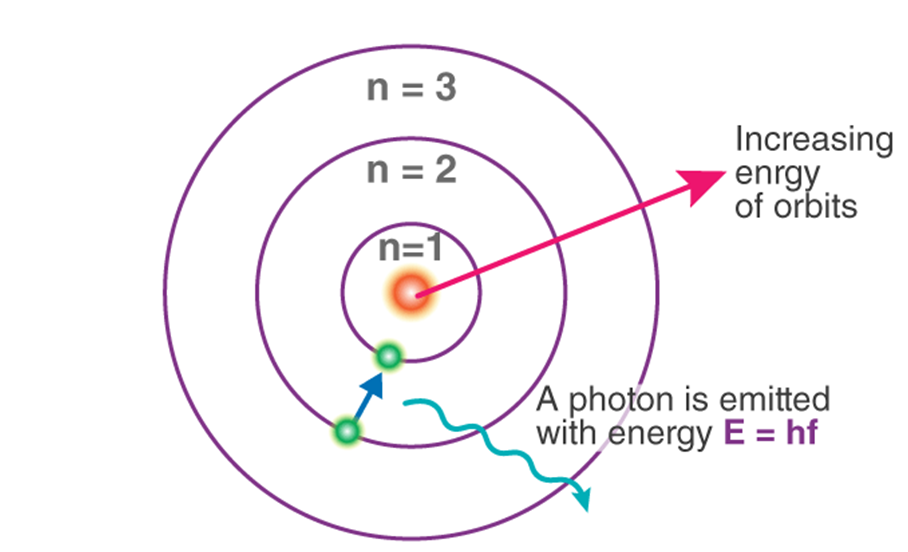
6. Isotopes
- Books Name
- Science Made Easy Science Book
- Publication
- Science Made Easy
- Course
- CBSE Class 9
- Subject
- Science
Atomic Number
→ The total number of proton lying in the nucleus of any atom is called the atomic number.
→ An atomic number is the identity of an atom, changing atomic number means changing the atom.
→ Atomic number is denoted by ‘Z’.
→ Atomic number = no. of protons or a neutral atom, no. of protons and electrons are equal.
Mass Number
→ It is the sum of total number of protons and no. of neutrons lying in the nucleus of an atom.
→ It is denoted by ‘A’.
→ Mass number = no. of protons + no. of neutrons
→ Representation of an atom:
zXA
(X= symbol of an element)
Example: Calculate number of protons, electrons and neutrons for 17Cl35 or 17Cl37
Sol. Since Cl is neutral,
No. of electrons = no. of protons = 17
Mass no. of Cl = 35
No. of neutrons = 35 - 17 =18
Distribution Of Electrons In Various Shells
→ The distribution of electrons in various shells is done in accordance to ‘Bohr-Bury Scheme’.
Bohr-Bury Scheme
(i) The filling of electrons in an atom is done in accordance to ‘2n2’, where ‘n’ is the number of shell and ‘2n2 ’ represents the total number of electrons that can be accommodated in that particular shell.
→ Maximum number of electrons that can be filled in particular shell.
If n = 1, i.e., K = shell, 2n2= 2×1 2 = 2 electrons
If n = 2, i.e., L = shell, 2n2 = 2×2 2 = 8 electrons
If n = 3, i.e., M = shell, 2n2 = 2×3 2 = 18 electrons
If n = 4, i.e., N = shell, 2n2 = 2×4 2 = 32 electrons
(ii) The outermost shell can’t hold more than 8 electrons, while second last shell can’t have more than 18 electrons, even though they may have capacity to hold more electrons.
Example: ‘Ca 20 ’, the electron distribution will be :
Ca 20 = 2(K), 8(L), 8(M), 2(N)
→ But Ca 20 = 2, 8, 10 is wrong although ‘M’ shell can contain upto 18 electrons.
(iii) The outermost shell can’t hold more than 2 electrons and the penultimate shell can’t hold more than 8 electrons unless the preceding inner shell (antepenultimate shell) is filled completely obey ‘2n2 ’ rule.
(i) K(19) = 2, 8, 8, 1
(ii) Al (13) = 2, 8, 3
(iii) F (9) = 2, 7
(iv) Ne (10) = 2, 8
(v) Na (11) = 2, 8, 1
Valence Shell and Valence Electrons
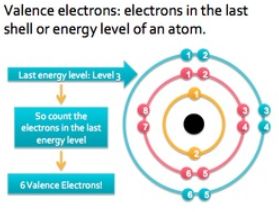
→ From Bohr-Bury sequence, we know that maximum number of electrons which can be accommodated in outermost shell is 8.
→ Every element has an urge to have 8 electrons in its outermost shell, in achieving 8 electrons atom can either gain electrons or loose electrons.
→ The number of electrons lost or gained by an element in achieving 8 electrons in its outermost shell will be called its Valency.
→ For elements like H, He, Li, Be and B, these elements lose their outermost electron to achieve 2 electrons in their outermost shell.
→ Isotopes are atoms of same elements having same atomic number and different mass number.
Example: Chlorine has two isotopes of mass numbers 35 and 37 respectively.
17Cl35 , 17Cl37
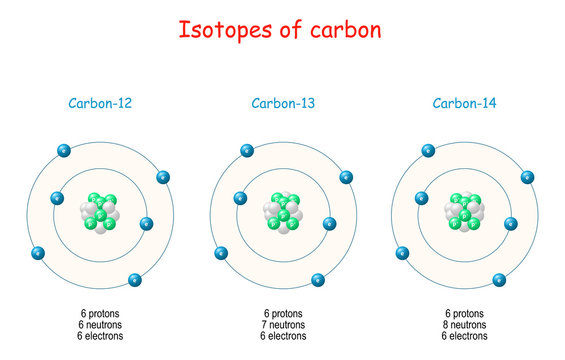
Uses of isotopes
(i) Uranium isotope is used as fuel in nuclear rector.
(ii) Isotope of cobalt is useful in treatment of cancer.
(iii) An isotope of iodine is used in the treatment of goitre.
Isobars
→ Isobars are the atoms of those elements which have the same mass number but different atomic
numbers are called isobars.
→ 20Ca40 and 18Ar40 have same mass number and different atomic number. 11Na24 and 12Mg24
another examples.
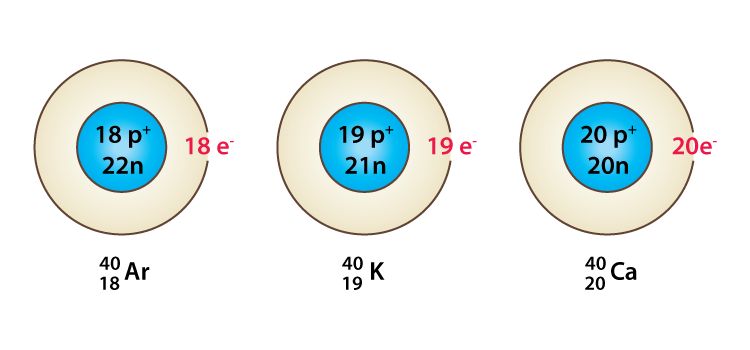

 Science Made Easy
Science Made Easy
 ACERISE INDIA
ACERISE INDIA
